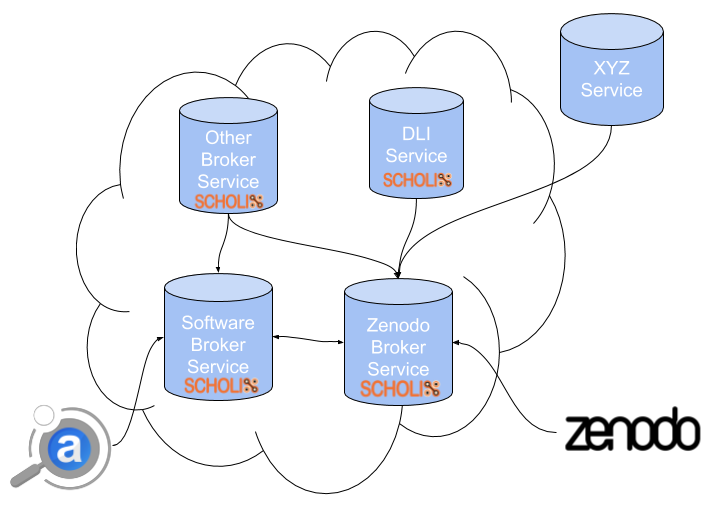Interoperability¶
The Broker service is populating its links store through a variety of different methods. Some of these are accepting data that is pushed from trusted external sources while others actively harvest data from publicly available sources.
The common denominator between these methods is the format of the link data which is based on Scholix. Any data input that arrives to the Broker is either pre-processed to comply or already complies with the Scholix schema. This allows for a robust ingestion pipeline which can keep track of the underlying scholarly objects, their identifiers and the relationships between them.

On a higher level, Broker services aim at achieving interoperability with other brokers or services which at this point were not able to formally communicate with each other and exchange information. The goal is to build a Broker Network where each participant focuses on maintaining the information that he has the best domain knowledge on and ability to extract the most quiality information from. This way the quality of the information is kept high and concentrated in separate parts of the network, avoiding redundant information that is unused, but at the same time allowing individual participants to decide about what kind of information they want to store depending on their needs. In its entirety, the network can then hold vast amounts of high quality knowledge in a distributed manner.
For example, ADS has a specialized ingestion workflow for extracting various forms of citations and references to software packages related to astrophysics. For that reason it would make more sense for ADS to push this knowledge to a Software Broker and not a Humanities & Social Sciences Broker.

